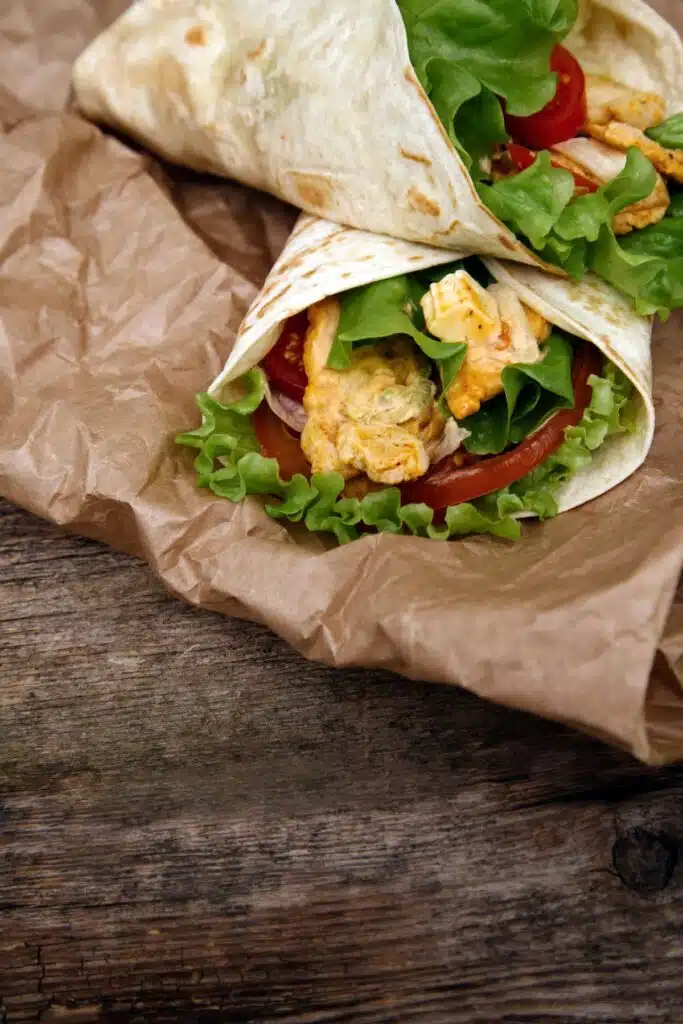Understanding and Managing Bloating and Inflammation Through Diet

by Laura Cipullo, RD, CDCES, CEDRD-S, RYT-500
Identifying Different Types of Bloating
Oh! There are so many types of “bloat”. Women get the premenstrual bloat, but we all get the belly bloat. Belly bloating can be from a few different things. First, when we eat fiber, our bacteria (part of the microbiome) attempt to break down the dietary fiber and food byproducts thereby releasing hydrogen gas; this literally causes belly distention. You can expect to have some distention after any meal with a complex carbohydrate such as whole grains or a non-starchy vegetable like Brussels. Another normal reaction to eating is the passage of partially digested food through your small intestine and then into and through the large intestine. The presence of food and food’s by-products passing through the gastrointestinal track will naturally cause distention that may appear as bloat.
Finally, there is bloating from anxiety. Yes, that is correct. Stop stressing over your stomach’s appearance because the more you stress, the more likely you are to throw your microbiome out of balance and cause a leaky gut with bloating. There is a bi-directional relationship between the gut and brain axis that is responsible for stress induced bloating, which likely affects 90% of the population with diagnosed irritable bowel syndrome. In addition to belly bloating, you may experience edema, a form of swelling in your hands, feet, face, and sometimes your belly the day after drinking too much alcohol. The alcohol actually blocks the release of a hormone known as vasopressin causing you to urinate more and thus become dehydrated. The body reacts to this state by conserving water and sometimes, too much water, making us puffy and bloated.
Recognizing Functional Bloating: Rome III Criteria
If these bloating symptoms feel familiar and persistent, ask your doctor about functional bloating! The following criteria known as the Rome III help physicians to identify individuals with persistent bloating unrelated to other medical conditions. The criteria include recurrent feeling of bloating or visible distention for at least 3 days per month, onset of symptoms at least 6 months prior to diagnosis, presence of symptoms for at least 3 months, and insufficient criteria to establish a diagnosis of irritable bowel syndrome, functional dyspepsia, or any other functional gastrointestinal disorder.
Recognizing Functional Bloating: Rome III Criteria
So then what about inflammation? Inflammation is usually an internal response experienced by the body as a result of the presence of some sort of irritant. Of course, you may see signs of inflammation when someone experiences a fall or a great force resulting in swelling, aka inflammation. However, the inflammation most people refer to when discussing their bloating or their gut, relates to gastrointestinal tract, most often their stomach, small intestine and or colon. Gastritis, also known as inflammation of the stomach lining and or a “leaky gut” resulting from inflammation consistent with irritable bowel syndrome are just two examples of this internal mechanism signifying poor wellness.
Bloating and inflammation intersect when inflammation results in bloating. For instance, you may have an inflamed stomach lining that leads to bloating or inflammation of the small intestine causing flattened villi as seen in celiac disease which results in poor nutrition absorption causing bloating, diarrhea and vitamin and mineral deficiencies.
Dietary Influences on Bloating and Inflammation
What we eat most definitely affects bloating and or inflammation. Dietary factors that affect bloating specifically include chronic alcohol ingestion, intolerances to lactose and fructose, consumption of nondigestible sugars known as oligosaccharides, eating any type of plant fiber, and of course, eating gluten. Typically, the body responds with inflammation which then presents itself as bloating.
Best Foods for Reducing Bloat
To ensure your belly will be without bloat for your evening event, eat an easier to digest protein and fat combination. Think 2-3 eggs for breakfast and a chicken hummus wrap for lunch. There is no dietary fiber in protein and most fat sources. This means the bacteria in our bodies will be limiting their gas production! Use a white, not whole grain wrap for this one day! A white wrap has limited fiber unlike a whole grain wrap that can have as much as 5 grams fiber/wrap. No gas, no bloat.
The friendly green leaf: Need a green veggie to eat when feeling bloated? Choose spinach! Sauté the spinach in olive oil on low heat, until it melts. This is the best vegetable to meet your green needs while not exacerbating belly discomfort and bloating. Spinach is considered a low FODMAP food (fermentable oligosaccharides, disaccharides, monosaccharides and polyols). Foods high in FODMAP carbohydrates are harder to digest and can cause cramping and bloating. Check out the Monash University FODMAP diet app for all questions and answers related to irritable bowel syndrome and the low FODMAP diet.
Natural Anti-Inflammatory Foods and Spices
Fight inflammation with the best anti-inflammatory food, sardines (not salmon). The best way to counter the production nitric oxide (NO) and tumor necrosis factor alpha (TNFα) production also known as pro-inflammatory agents, is to eat a diet rich in the polyunsaturated fatty acids known as omega 3. These essential fatty acids are associated with decreasing the occurrence and even the severity of inflammatory diseases such as cancer, diabetes and heart disease.
Get spicy with ginger, black pepper and turmeric! Add these spices to hot water, green tea or use as condiments when attempting to fight inflammatory conditions such as rheumatoid arthritis, gastritis and esophagitis. Ginger and it’s spice friends inhibit the body from making pro-inflammatory chemicals known as cytokines.
References:
- Lacy BE, Gabbard SL, Crowell MD. Pathophysiology, evaluation, and treatment of bloating: hope, hype, or hot air?. Gastroenterol Hepatol (N Y). 2011;7(11):729-739
- Bishehsari F, Magno E, Swanson G, et al. Alcohol and Gut-Derived Inflammation. Alcohol Res. 2017;38(2):163-171.and Lacy BE, Gabbard SL, Crowell MD. Pathophysiology, evaluation, and treatment of bloating: hope, hype, or hot air?. Gastroenterol Hepatol (N Y). 2011;7(11):729-739.
- Ahmad TB, Rudd D, Kotiw M, Liu L, Benkendorff K. Correlation between Fatty Acid Profile and Anti-Inflammatory Activity in Common Australian Seafood by-Products. Mar Drugs. 2019;17(3):155. Published 2019 Mar 6. doi:10.3390/md17030155
- Bustamante MF, Agustín-Perez M, Cedola F, et al. Design of an anti-inflammatory diet (ITIS diet) for patients with rheumatoid arthritis. Contemp Clin Trials Commun. 2020;17:100524. Published 2020 Jan 21. doi:10.1016/j.conctc.2020.100524
- Mashhadi NS, Ghiasvand R, Askari G, Hariri M, Darvishi L, Mofid MR. Anti-oxidative and anti-inflammatory effects of ginger in health and physical activity: review of current evidence. Int J Prev Med. 2013;4(Suppl 1):S36-S42.


